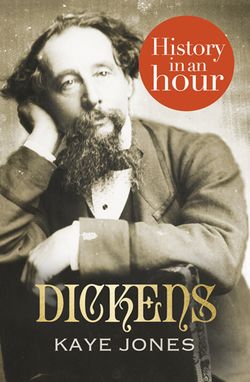Читать книгу Dickens: History in an Hour - Kaye Jones, Kaye Jones - Страница 9
ОглавлениеThe Creation of ‘Boz’
December 1833 saw the publication of Dickens’ first piece of creative writing, entitled A Dinner at Poplar Walk. Though he received no payment from the Monthly Magazine for the story, the publication of his work brought him a great sense of pride and achievement. Between January and June 1834, a further four stories, Mrs Joseph Porter Over the Way, Horatio Sparkins, The Bloomsbury Christening and The Boardinghouse appeared in the Monthly Magazine along with the anonymous short story, Sentiment, in Bell’s Weekly Magazine. In August, The Boardinghouse II appeared in the Monthly Magazine, significant as the first work to use Dickens’ pseudonym, ‘Boz’. This originated from the nickname of Dickens’ youngest brother, Augustus, ‘Moses’. When pronounced through the nose, it made the word ‘Boses’ and was then shortened to Boz.
That month also brought Dickens a new appointment as a parliamentary reporter for the one of the most popular newspapers in the country, the Morning Chronicle. Although the post brought Dickens an impressive weekly salary of five guineas (around £230 in modern currency), much of it went to ease his father’s ongoing financial troubles. In September he began work on the Chronicle’s latest creative project, Street Sketches, an illustrated look at life in the city. Through his success at the Morning Chronicle, he was introduced to George Hogarth, editor of the Evening Chronicle, and great admirer of his work. Hogarth persuaded Dickens to begin working on a similar endeavour to Street Sketches, called Sketches of London for the Evening Chronicle at an additional two guineas per week.
The final months of 1834 saw Dickens working hard to save his father from another spell in the debtors’ prison. He borrowed money from friends, mortgaged his income and arranged for the family to move to cheaper accommodation at 21 George Street, Adelphi. Dickens did not accompany the family to this house and instead began renting rooms at 13 Furnival’s Inn with his younger brother, Frederick.
Catherine Dickens
A friendship blossomed with George Hogarth and, in May 1835, Dickens became engaged to his eldest daughter, Catherine. While Catherine had the same brown hair, blue eyes and slender frame as his first love, she had a gentler nature than Maria Beadnell, a characteristic that greatly appealed to Dickens. In the same month as the engagement, Dickens moved to Selwood Terrace, Brompton, to be closer to Catherine.
